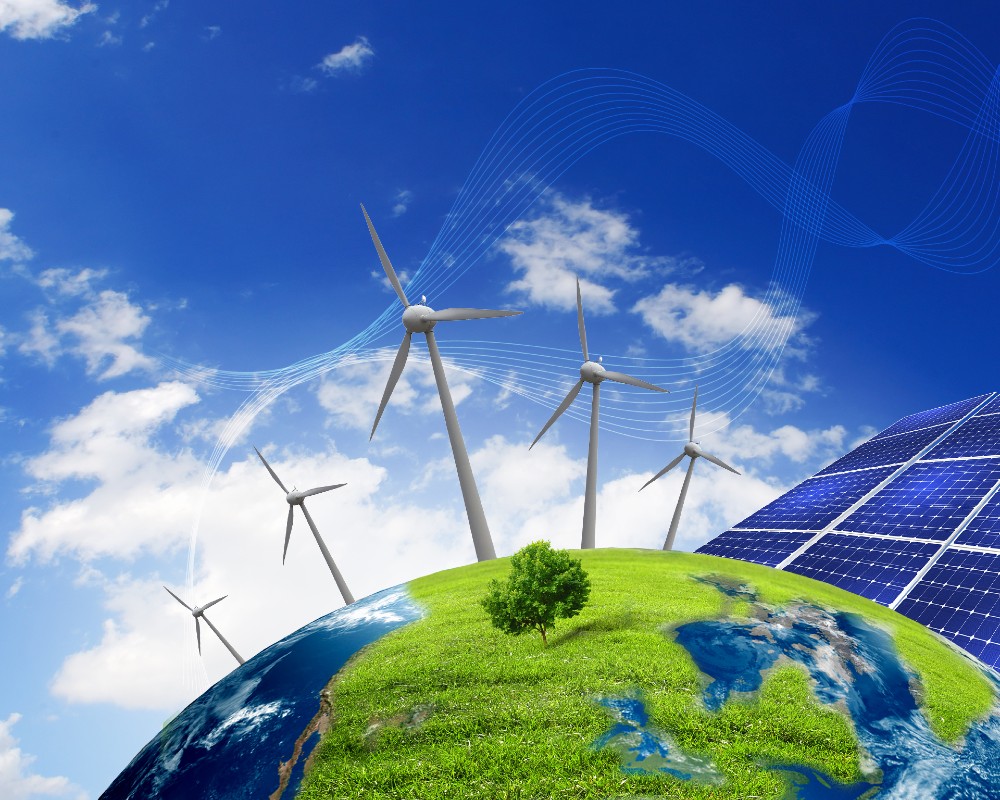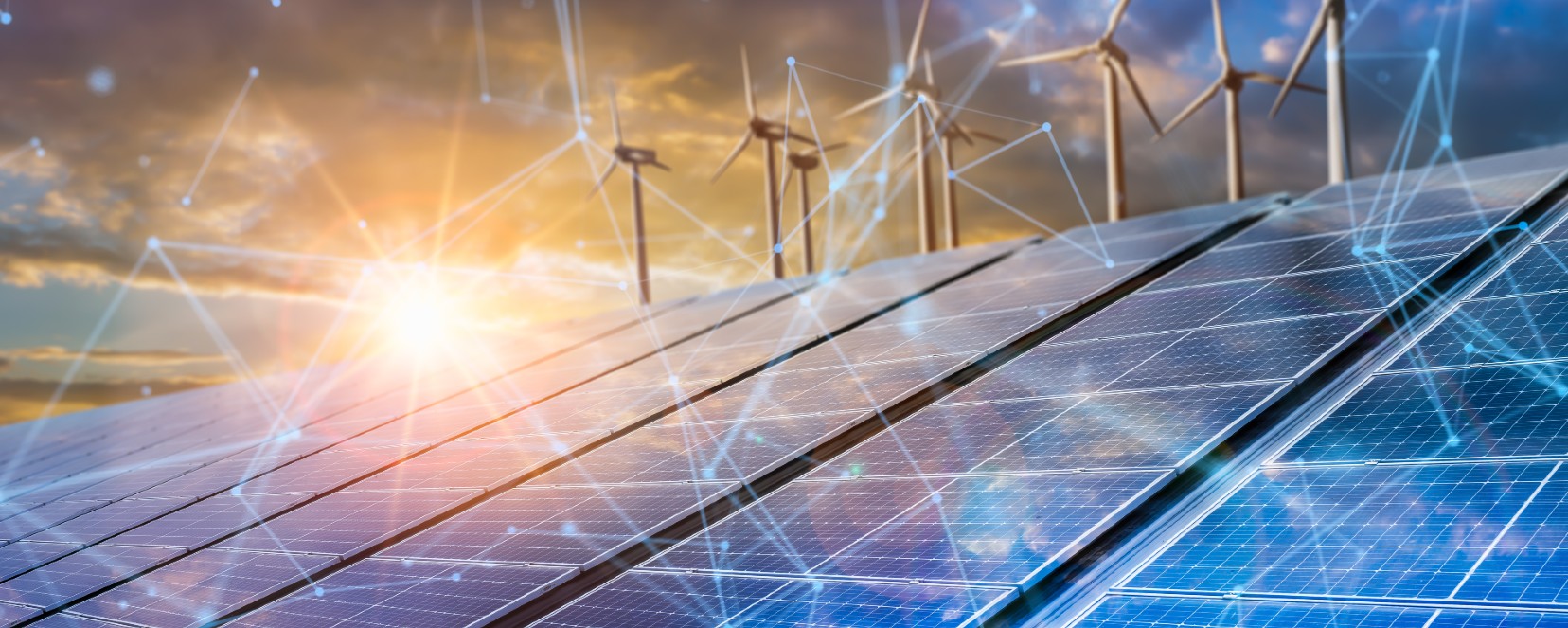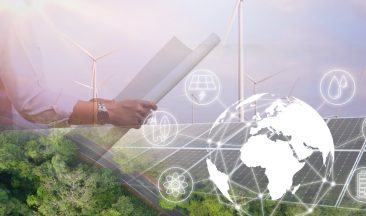Energy is considered renewable when it is released from renewable resources– that is sources that can conceivably be replenished within a human lifespan.
What is a Renewable Energy Source?
An energy source that continually regenerates itself through natural means is considered renewable.
Renewable energy is derived from sources that are continuously or relatively quickly replenished by nature. Sources include sunlight, wind, tides, plant growth, and geothermal heat.
What is Non-Renewable Energy?
The earth has many rich minerals and fossil fuel resources which have been exploited since time immemorial. From the discovery of fire through to the invention of steam engines, and from the discovery of early electrical applications to the invention of Edison’s lightbulb, fossil fuels have played a major role in the development of the modern industrialized world as we know it today. All of this progress has been made on the back of fossil fuels extracted from the earth.
You may well ask, what is non-renewable energy? It is energy derived from fossilized dead matter, is usually readily available, having been obtained from mines or wells dug deep into the earth.
The common non-renewable energy sources that we are familiar with include petroleum, coal, and natural gas formed nearly 300 million years ago, well before dinosaurs roamed the earth.
This period, also known as the Carboniferous Period, was characterized by the growth of algae, plants, and plankton in a primordial soup. On their death, they sank to the bottom of these bodies of water but the energy they gained from photosynthesis was stored in them and conserved.
Over time, with pressure from rocks and sediment above them, they eventually fossilized and gave rise to what we today know as fossil fuels. Because their genesis was based on a period in the earth’s history that isn’t likely to be repeated in a human lifetime, they are considered a finite and non-renewable resource.
There are huge reservoirs of these fossil fuels all over the world and they provide approximately 80% of the world’s energy requirements. When heated, however, they give off large amounts of substances that pollute the air and contribute to global warming.

Major Sources of Renewable Energy
The story of renewable energy started some 4000 years BCE with the development of the waterwheel in Europe. This conversion of the energy contained in moving water was then supplemented by the all too familiar windmills that dot the landscape of the Netherlands.
These were far off from today’s highly efficient wind turbines which provide usable electricity and can power entire villages or towns. Let’s take a closer look at the major sources of renewable energy that are available today.
Solar energy
The sun sends more energy to the earth in an hour than the entire human race uses in a year. This renewable energy can be utilized by photovoltaic (PV) solar panel cells to produce electricity directly or by concentrated solar power (CSP) units to generate heat to generate electricity.
CSP units use mirrors to focus solar energy on a water source to produce enough steam to drive turbines to produce electricity; PV cells capture solar energy to produce electrical charges.
The sun is an extremely safe source of energy. However, there are environmental concerns regarding the risks associated with solar panels construction materials and the amount of land needed for industrial-scale solar fields. In many cases, it is possible to create a symbiotic relationship between pasture and panel.
Despite its apparent advantages, solar power produced only 3% of the world’s supply of electricity in 2020. It may be the fastest-growing source of electricity today, but a considerable amount of effort is needed for solar power to contribute significantly to our energy needs anytime soon.
Water (Hydro) power
Flowing water can generate power by turning turbines. Also, this energy is known as hydropower, Water power is the most common source of renewable energy today—yet it provides only about one-sixth of the world’s energy needs.
As with the sun, water is a very safe source of energy. Its primary threat to the environment is that dams change the natural flow of water, thereby disturbing local ecosystems and biodiversity. This effect can be mitigated, however, using smaller hydropower projects. China has been a leader in developing such projects.
Wind power
The wind has been used for thousands of years to generate energy. The “windmills” of today work in a similar way, with giant blades on turbine towers spinning a generator (rather than the grinding wheel of the past) to produce electricity.
The wind is the second-largest source of renewable energy, yet it produces only 6% of the world’s electricity annually. China had the greatest wind-generating capacity in 2020, followed by the United States, particularly Texas.
Geothermal energy
Geothermal energy is derived from scalding hot water trapped in reservoirs lying deep below the earth’s surface. Drilling reduces the pressure against that water allowing it to rise to the earth’s surface, where it turns into steam that can turn turbines to generate electricity.
Biomass
Biomass has been defined collectively as the byproducts of living or recently living but non-fossilized organisms, i.e., waste from wood, animals, plants, and landfills. Biomass absorbs energy and carbon while alive and is used to create biofuels (e.g., ethanol, which is derived from corn and added to gasoline in motor vehicles) after death.
Although it has been used since the beginning of human history and remains the primary renewable energy source in developing nations today, biomass generates less than 12% of the world’s energy needs.
Unlike other renewable energy sources, the biomass effect on the environment is controversial. Certain woods, for example, contain sulfur and nitrogen, which can produce the pollutants sulfur dioxide and nitrogen oxides. The amount produced is considerably lower than that released by burning coal, however.
Technologies Transforming the Energy Sector
The use of renewable energy is driven by market conditions (cost, demand, availability), policy decisions, (tax credits, tariffs, etc.), and government regulations remain the outstanding barrier, especially since technologies are needed to make these energy sources efficient and cost-effective. Some technologies to watch for include:
Digitization
Larger energy storage systems will require improved grid management efficiency for optimal protection, control, automation, and communication among these systems and among the myriad devices associated with them to ensure that the correct amount of power reaches each device at the correct time.
Artificial intelligence
Digitization requires a smarter grid with more “intelligence” to improve grid efficiency. Artificial intelligence (AI) can help the grid manage the increased complexity of its operations and help the corporate energy market reduce energy use and carbon emissions.
Carbon capture and storage
Carbon capture is an emerging technology that traps carbon dioxide released from coal-fired, chemical, and biomass power plants before it can escape into the atmosphere.
The captured carbon is then sequestered for centuries to come. This may sound like an efficient way to reduce industrial carbon emissions, but it has received considerable push-back from environmentalists, who believe it will impose heavy energy and carbon penalties when carried out.
Green Hydrogen
Green hydrogen is derived from one of our most abundant renewable energy sources: water. When water (H2O) is split into its two components—hydrogen and oxygen—it releases hydrogen, which has an enormous potential to accelerate the entrapment of carbon (decarbonization) and help us achieve net-zero emissions, which is a primary goal for several industrial processes, aviation, and shipping.
More on the subject:
The Future of Batteries In Renewable Energy Storage
Renewable Energy Trends In 2024
ICL and Renewable Energy
The worldwide use of renewable energy continues to rise and is expected to reach 60% by 2050. ICL contributes to this goal through innovative uses of advanced materials in the energy storage industry. Our products enable renewable energy storage for industry and households as we strive to improve battery efficiency.
Our R&D is invested in developing additional energy storage solutions to improve battery capacity while providing batteries with a longer life and smaller size and weight.
Battery Electrolytes
ICL provides tailor-made electrolyte blends for flow batteries and bromine-based energy storage according to customer needs. In so doing, we provide batteries at cost savings that are suitable for long-term storage.
Reduced Carbon Footprint
ICL has set an aggressive target to reduce its carbon footprint by over 30% within a decade, declaring that it will be carbon neutral by 2050. ICL is now currently assessing the carbon footprint of each of its main products.
This includes the design of a Sustainability Index that can be used to evaluate the environmental impact of new and potential products. Our clients are advised regarding best practices for using our products to minimize environmental impact.
ICL is the world’s largest producer of elemental bromine. Bromine is used to manufacture bromine-based flow batteries that are cost-effective, have a long life, provide long-duration energy storage, and are fully recyclable and reusable.
Renewable Energy
Renewable energy is widely considered the basis for continued economic and human development while combatting the harmful impact of climate change. As renewable energy sources become more readily available, efficient, and economically feasible, we plan to make use of them worldwide.







